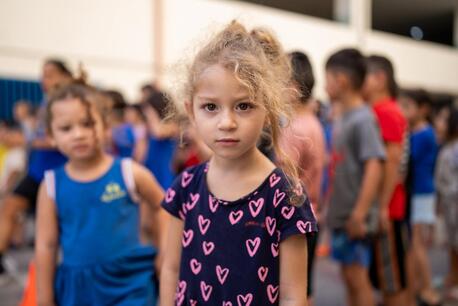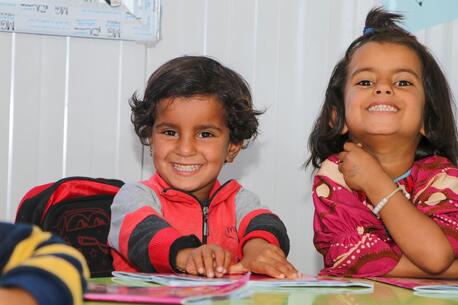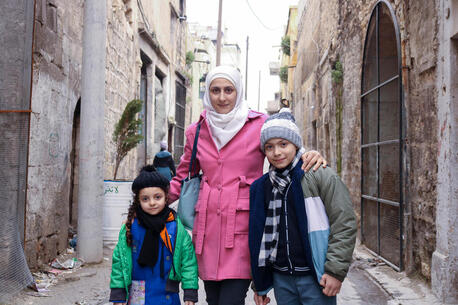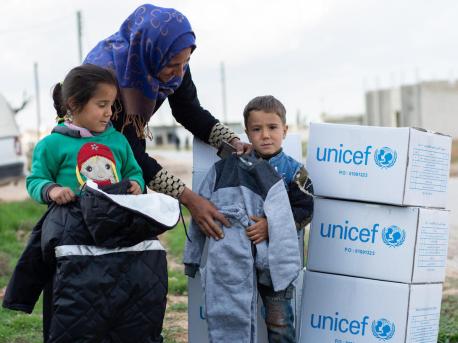
UNICEF Is Working to Keep Syria's Children Safe and Warm This Winter
Ten years of conflict, displacement and rising poverty have had a devastating effect on already vulnerable children in Syria. For families who have lost almost everything, plunging temperatures bring a dangerous new threat to health and safety.
“Our situation is very tough," said Dahlia, a 35-year-old mother of five, above, as she unpacked a UNICEF box filled with warm winter clothes for 5-year-old Rihab and 4-year-old Mohammad. The family has moved again and again in the five years since violence forced them from their home in eastern rural Idlib, in Syria's northwest.
"These clothes came just in time," she said. "I have no sufficient means for living or for providing for the children. Many times I’ve had to rely on the kindness of relatives and strangers to meet some of our basic needs.”

According to the latest situation report, 6.7 million people are internally displaced in Syria. An estimated 1.9 million people are living in informal settlements and planned camps across the country — a 20 percent increase since January 2020. High unemployment has left many parents unable to provide nutritious food and warm clothes for their children. Daily power cuts and fuel scarcity make it hard to fend off the cold.
An estimated 1.9 million people are living in informal settlements and planned camps in Syria — up 20 percent from January 2020
Through partners, UNICEF has reached more than 81,800 children between the ages of 0 and 14 with warm winter gear in northeast Syria, Idlib and rural Damascus, thanks to generous contributions from Canada, the European Civil Protection and Humanitarian Aid Operations (ECHO), Switzerland, Luxembourg, the Syria Humanitarian Fund (SHF), Japan and the Foreign, Commonwealth and Development Office (FCDO).
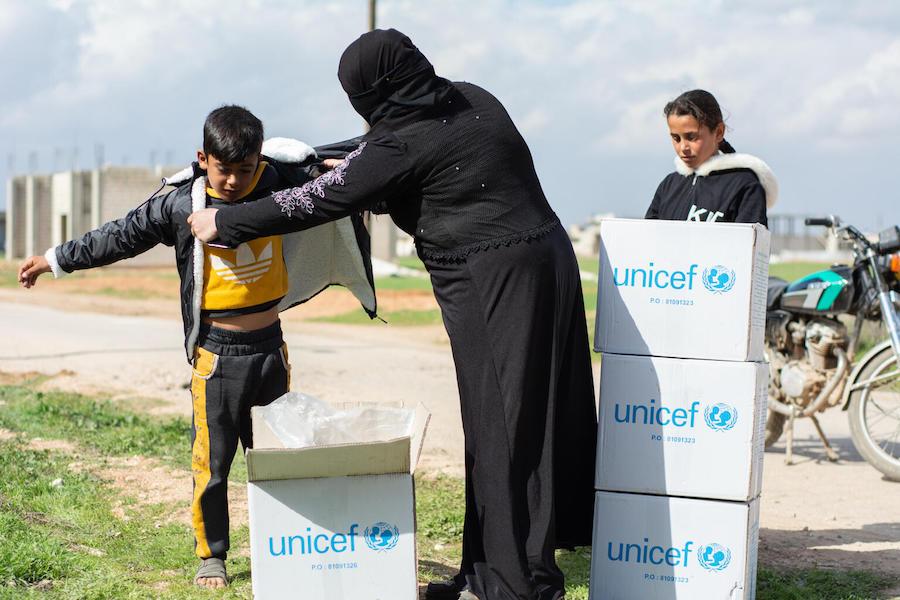
Above, 9-year old Malek tries on the new jacket from his UNICEF winter kit in Sinjar, southeastern rural Idlib. “Each of my four children has received these much-needed winter clothes. I can't afford to buy any for them," said his mother, Hanaa, 30. "Winter has been very tough. We have mainly relied on aid to provide the children’s needs, our food and fuel for heating,”

Each UNICEF clothing kit contains a winter jacket, a woolen sweater, a thermal outfit including pajamas, warm winter pants, a woolen hat, a scarf, socks, gloves and winter boots.
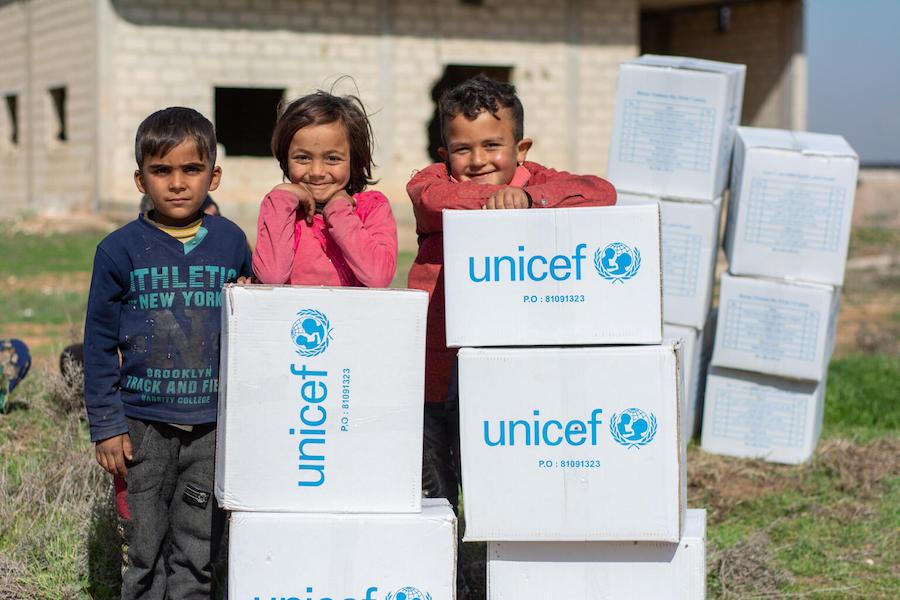
"This winter has been very cold, but now the children look so happy to have these new clothes that should keep them warm,” said Siham, 39, mother of Khalaf, 6, Marasil, 8, and Jalal, 6, above.
This winter, UNICEF and partners will reach 25,000 children in Syria with warm clothes
Between September 2021 and February 2022, UNICEF and partners will provide 25,000 children across Syria with warm winter clothes, with an emphasis on those living in camps, collective shelters, informal settlements and vulnerable communities. Give children the gift of warmth this winter.
Top photo: Dalia, 35, unpacks winter clothes for her daughter Rihab, 5, and son Mohammad, 4, to try on in Sinjar, southeastern rural Idlib, Syria. To keep her five children from freezing this winter, she collects scrap wood and tree twigs to burn for heating. All photos: © UNICEF.
HOW TO HELP
There are many ways to make a difference
War, famine, poverty, natural disasters — threats to the world's children keep coming. But UNICEF won't stop working to keep children healthy and safe.
UNICEF works in over 190 countries and territories — more places than any other children's organization. UNICEF has the world's largest humanitarian warehouse and, when disaster strikes, can get supplies almost anywhere within 72 hours. Constantly innovating, always advocating for a better world for children, UNICEF works to ensure that every child can grow up healthy, educated, protected and respected.
Would you like to help give all children the opportunity to reach their full potential? There are many ways to get involved.



